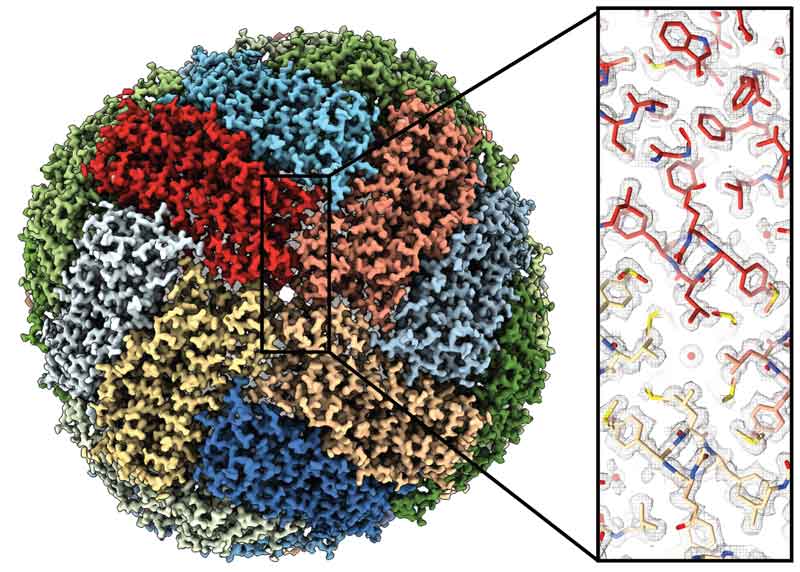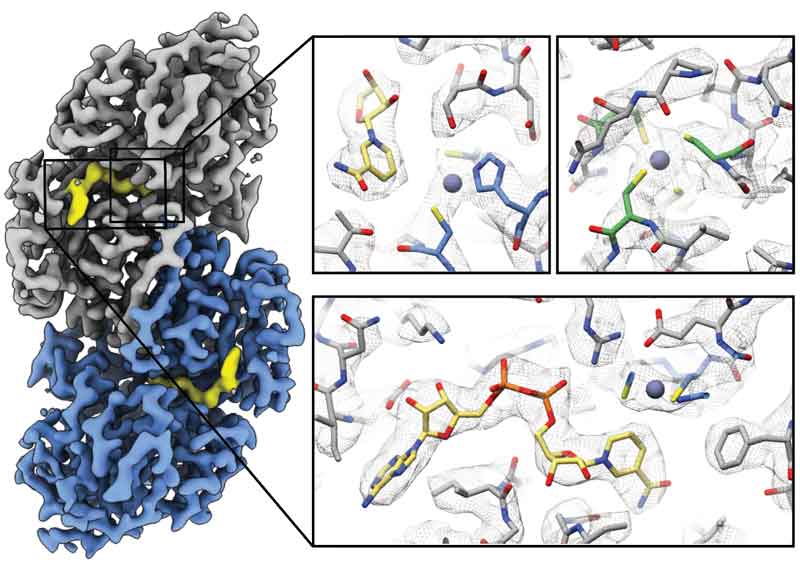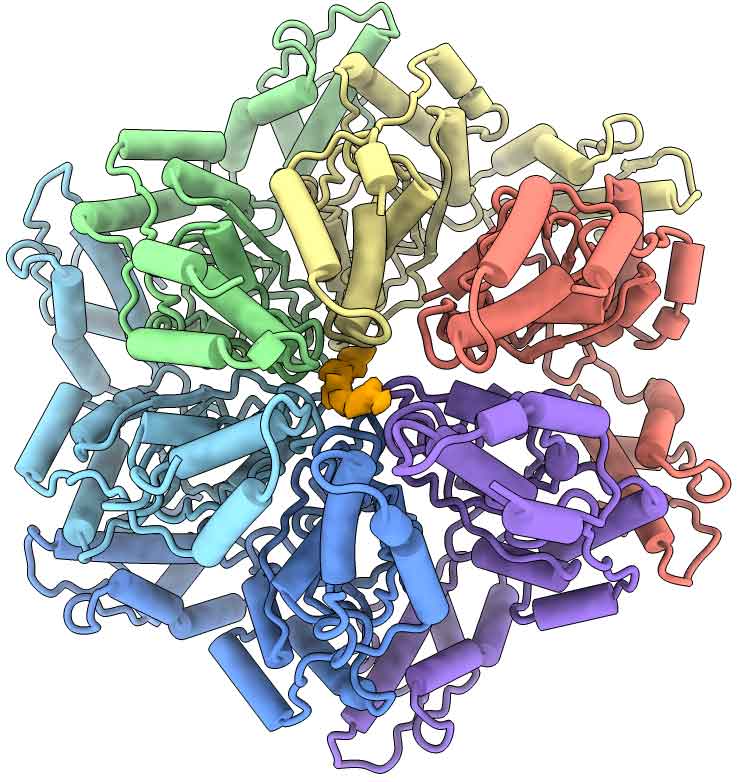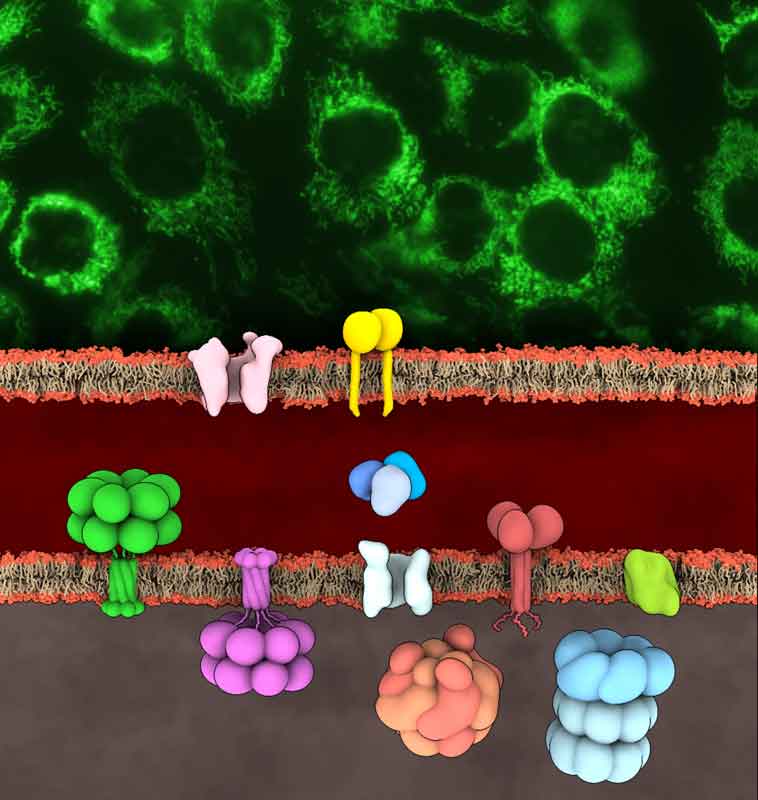Overview of our research
Our bodies are made up of tens of trillions of living cells. Within each of these cells are countless microscopic molecular machines, working continuously to keep the cells healthy. Disturbances of this machinery (whether by environmental or genetic factors) can lead to diseases such as cancers, heart disease, strokes, and neurodegenerative diseases like Alzheimer's and Parkinson's. We use electron microscopes to visualize the impossibly tiny cellular machines within our cells to figure out how they work. By learning about the 3D shapes of these machines we can gain transformative insights into how disturbances lead to disease states, and discover avenues for therapeutic intervention.
Cryo-EM methodology development
We work to develop methodologies that expand the limits of achievable resolution through optimized specimen preparation and cryo-electron microscopy (cryo-EM) data collection strategies, as well as novel image processing algorithms.

Cheaper, faster, easier: Cryo-electron microscopy (cryo-EM) is a technique that is now widely used to determine the structures of cellular machinery. To increase the accessibility of this powerful technique to biologists, we develop software, sample preparation strategies, and data acquisition protocols to streamline automated structure determination using cheaper, more accessible instrumentation. Our ultimate goal is near-instantaneous, automated assessment of cryo-EM specimens and rapid high-resolution structure determination.
Smaller, smaller, smaller: Many of the enzymes required for cell survival are incredibly small (very small - even by electron microscopy standards). Some of these complexes are believed to be too small to resolve using single particle cryo-EM approaches. We are developing new grid support systems, sample preparation methodologies, and image processing strategies that will enable structure determination of biological complexes that are smaller than previously thought attainable by cryo-EM. These technologies enable us to examine molecular assemblies ranging widely in size and shape to understand their architectures, the conformational landscapes that are responsible for molecular function, and how these landscapes are influenced by small molecule ligands.

Molecular Motors and Human Disease
We combine our cryo-EM expertise with molecular biology approaches to determine the molecular bases for a variety of neurodevelopmental, neurodegenerative, and heart diseases. Specifically, our studies focus on understanding the mechanisms that underlie cellular protein homeostasis, and how perturbations of these mechanisms are linked to disease states.

Motors that prevent disease: We primarily focus on molecular motors that convert chemical energy within our cells into powerful mechanical forces that reshape the proteins in our cells. These motors perform "protein quality control" for our cellular systems, ensuring proteins are properly folded, and that toxic proteins are eliminated. We use biophysics and biochemistry to explore the molecular mechanics involved in the conversion of chemical energy into the massive structural rearrangements required to carry out vital functions.
Motors at work in mitochondria: Mitochondria function within a vast, integrated, and dynamic cellular network, constantly undergoing division and fusion events. Their cellular roles go far beyond energy production, and the medical importance of mitochondrial biology is increasingly underscored by the growing number human diseases that are associated with mitochondrial dysfunction. As we age, the protein quality control motors within mitochondria begin losing their ability to respond to the daily stresses associated with cellular function. Loss of protein homeostasis within mitochondria has been linked to cancers and age-related disease. In collaboration with the Wiseman Lab, we study the motors distributed throughout mitochondria, gaining insights into how these macromolecular enzymes maintain healthy mitochondria and how their dysfunction relates to disease.

A 3-minute introduction to cryo-EM
This short movie is based on slides from Gabe Lander's PhD thesis defense (2009).
Although cryo-EM instrumentation and algorithms have improved much since then, the fundamentals of the methodology presented in this video remain relevant.
The slides used to generate this movie can be downloaded using the links below:
Keynote
Powerpoint (animations don't work)